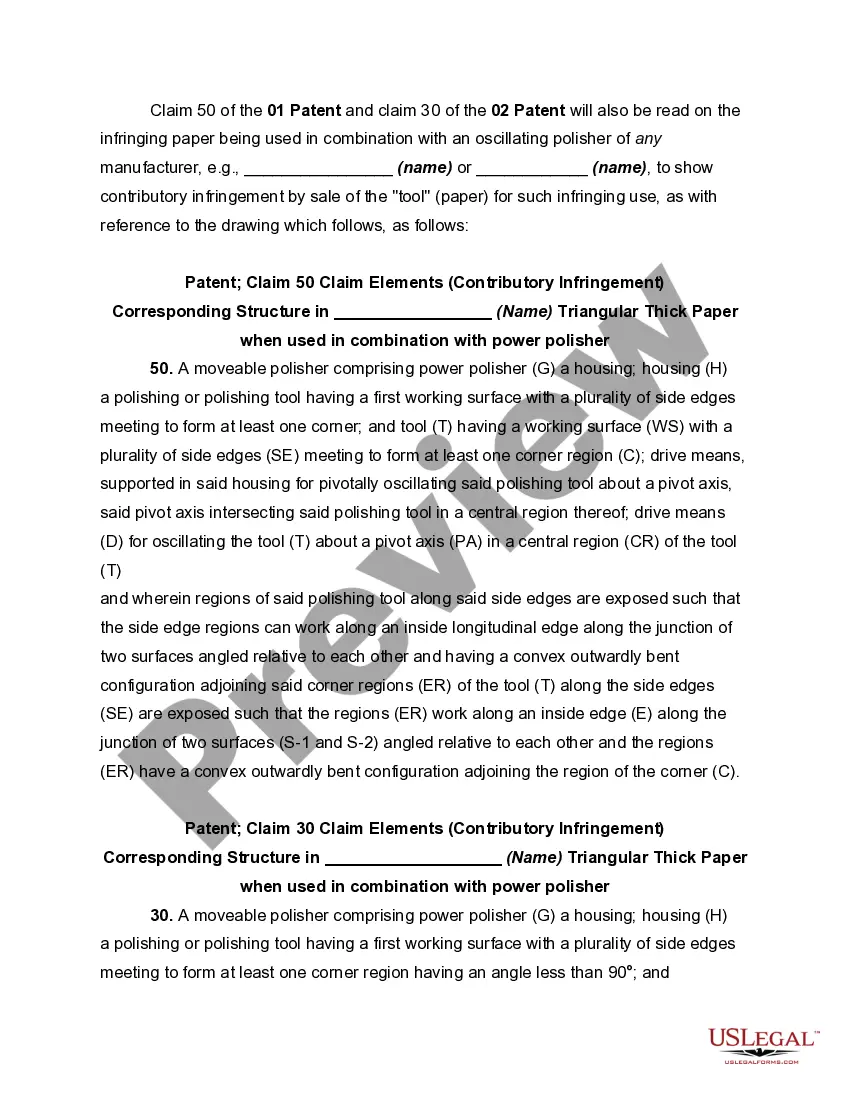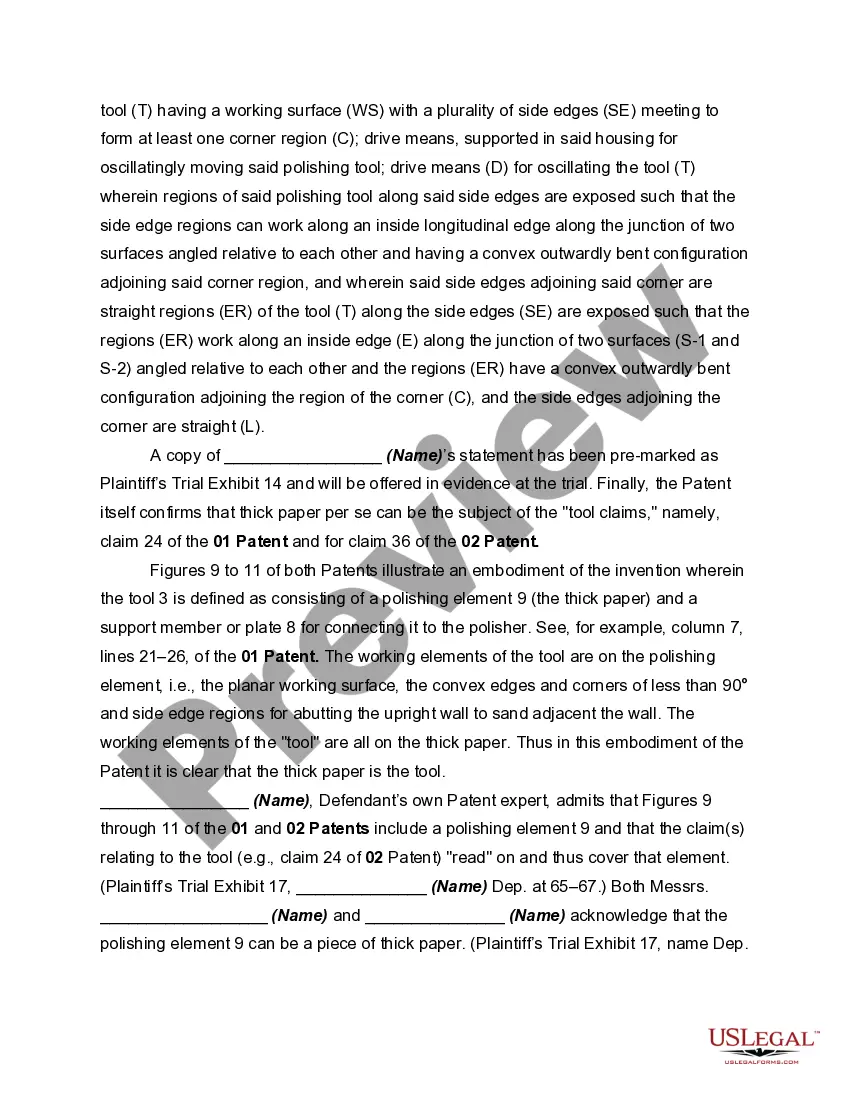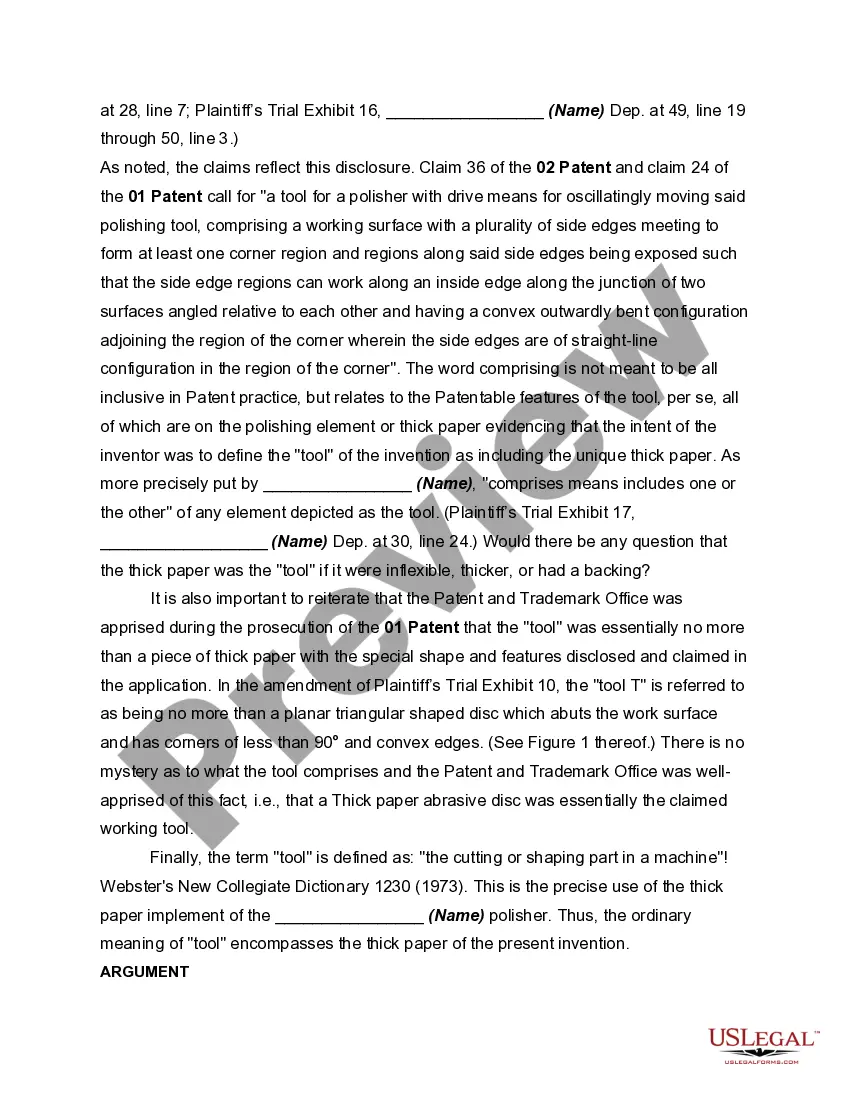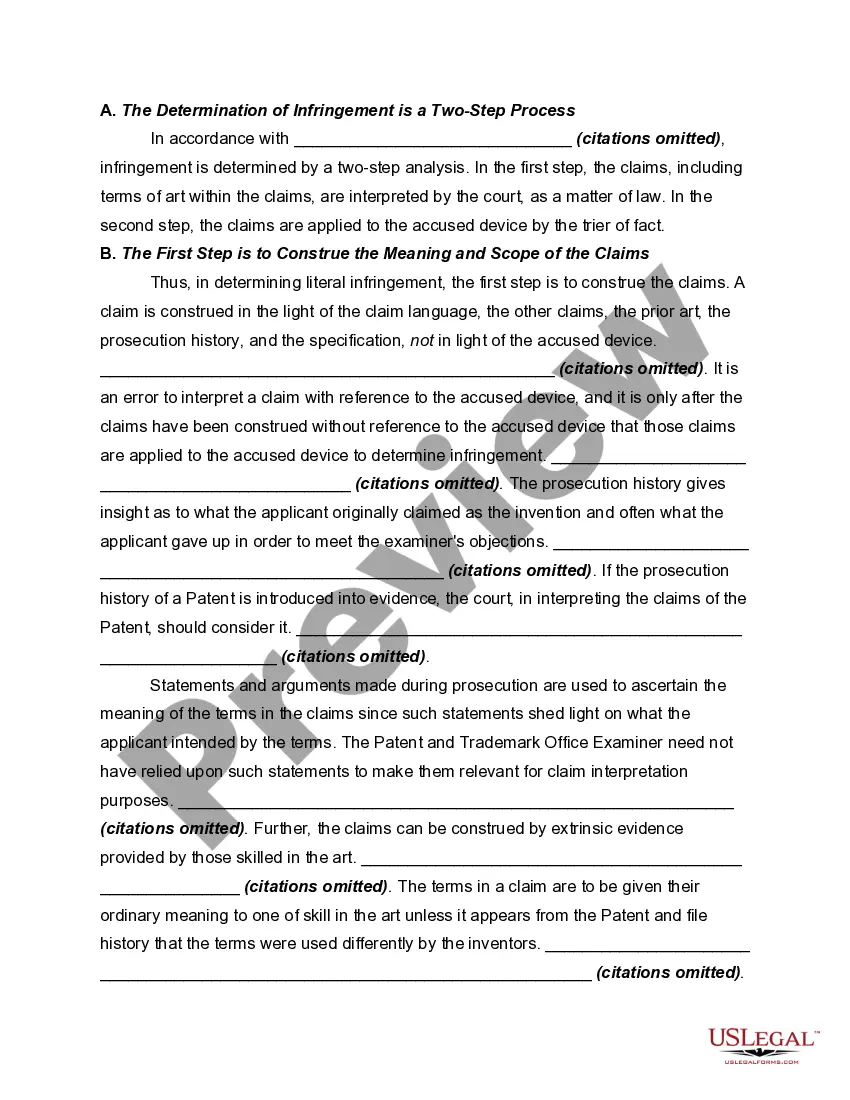Pretrial statements or memoranda of counsel for the parties are frequently required either by the governing statute or rules of court, or by order of the judge. These statements may be joint or separate and are prepared prior to pretrial conference and presented to the judge or magistrate. They should cover all of the matters that counsel may be able to agree on before the conference, and should be as complete and as detailed as the statute, rules, or order may direct.
The pretrial statement or memorandum may include a brief statement of the material facts as claimed by each party and of the points of law, and a citation of authorities in support of each point, on which the party intends to rely at the trial. It may also include a list of all exhibits each party expects to offer at the trial, other than those to be used for impeachment, with a sufficient description of each exhibit and a statement of the purpose for which it will be offered.
This form is a sample of such a case.
Minnesota Plaintiff's Pretrial Memorandum for a Bench Trial in a Patent Case is a vital document that serves to outline the legal arguments, facts, and evidence that the plaintiff intends to present during the upcoming bench trial. This memorandum is submitted to the court and opposing party prior to the trial to ensure all relevant information is available and to facilitate an efficient trial process. It contains several key sections, including: 1. Cover Page: The cover page of the Minnesota Plaintiff's Pretrial Memorandum typically includes the case caption, court details, trial date, and the names of the plaintiff and their legal representatives. 2. Table of Contents: The table of contents provides an organized outline of the various sections and subsections within the memorandum for easy reference. 3. Statement of Jurisdiction and Venue: In this section, the plaintiff establishes the basis for the court's jurisdiction over the patent case and the appropriateness of the chosen venue. 4. Statement of Undisputed Facts: In this section, the plaintiff summarizes the key facts that both parties agree upon, thereby narrowing down the points of contention for the trial. 5. Statement of Disputed Facts: Here, the plaintiff lists the facts that are in dispute and provides a brief explanation or argument as to why they believe their version of the facts is accurate. 6. Legal Arguments: This section is dedicated to presenting the plaintiff's legal arguments and theories of the case. It includes relevant case law, statutes, and patent regulations to support the plaintiff's position. 7. Overview of Witnesses: The plaintiff identifies the witnesses they intend to call during the trial, along with a brief summary of each witness's qualifications and the topics they will testify about. 8. Expert Witnesses: In case expert testimony is necessary, the plaintiff provides detailed information about the expert witnesses, including their qualifications, opinions, and the methodology used in forming those opinions. 9. Exhibit List: The plaintiff lists the exhibits they intend to introduce as evidence during the trial, such as patents, technical documents, diagrams, or photographs. Each exhibit is numbered and briefly described. 10. Proposed Jury Instructions (if applicable): If the bench trial includes a jury, the plaintiff provides the court with their proposed jury instructions, which outline the applicable law and legal standards the plaintiff believes should guide the deliberation. 11. Conclusion: The memorandum concludes by summarizing the plaintiff's position and the relief sought from the court. Different types of Minnesota Plaintiff's Pretrial Memoranda for a Bench Trial in a Patent Case may vary in structure and content based on the specific nature of the case and the legal strategies employed. However, the aforementioned sections are commonly included in most pretrial memoranda. It is crucial that plaintiffs' attorneys customize the memorandum to suit the specific circumstances and legal nuances of each individual patent case.Minnesota Plaintiff's Pretrial Memorandum for a Bench Trial in a Patent Case is a vital document that serves to outline the legal arguments, facts, and evidence that the plaintiff intends to present during the upcoming bench trial. This memorandum is submitted to the court and opposing party prior to the trial to ensure all relevant information is available and to facilitate an efficient trial process. It contains several key sections, including: 1. Cover Page: The cover page of the Minnesota Plaintiff's Pretrial Memorandum typically includes the case caption, court details, trial date, and the names of the plaintiff and their legal representatives. 2. Table of Contents: The table of contents provides an organized outline of the various sections and subsections within the memorandum for easy reference. 3. Statement of Jurisdiction and Venue: In this section, the plaintiff establishes the basis for the court's jurisdiction over the patent case and the appropriateness of the chosen venue. 4. Statement of Undisputed Facts: In this section, the plaintiff summarizes the key facts that both parties agree upon, thereby narrowing down the points of contention for the trial. 5. Statement of Disputed Facts: Here, the plaintiff lists the facts that are in dispute and provides a brief explanation or argument as to why they believe their version of the facts is accurate. 6. Legal Arguments: This section is dedicated to presenting the plaintiff's legal arguments and theories of the case. It includes relevant case law, statutes, and patent regulations to support the plaintiff's position. 7. Overview of Witnesses: The plaintiff identifies the witnesses they intend to call during the trial, along with a brief summary of each witness's qualifications and the topics they will testify about. 8. Expert Witnesses: In case expert testimony is necessary, the plaintiff provides detailed information about the expert witnesses, including their qualifications, opinions, and the methodology used in forming those opinions. 9. Exhibit List: The plaintiff lists the exhibits they intend to introduce as evidence during the trial, such as patents, technical documents, diagrams, or photographs. Each exhibit is numbered and briefly described. 10. Proposed Jury Instructions (if applicable): If the bench trial includes a jury, the plaintiff provides the court with their proposed jury instructions, which outline the applicable law and legal standards the plaintiff believes should guide the deliberation. 11. Conclusion: The memorandum concludes by summarizing the plaintiff's position and the relief sought from the court. Different types of Minnesota Plaintiff's Pretrial Memoranda for a Bench Trial in a Patent Case may vary in structure and content based on the specific nature of the case and the legal strategies employed. However, the aforementioned sections are commonly included in most pretrial memoranda. It is crucial that plaintiffs' attorneys customize the memorandum to suit the specific circumstances and legal nuances of each individual patent case.













